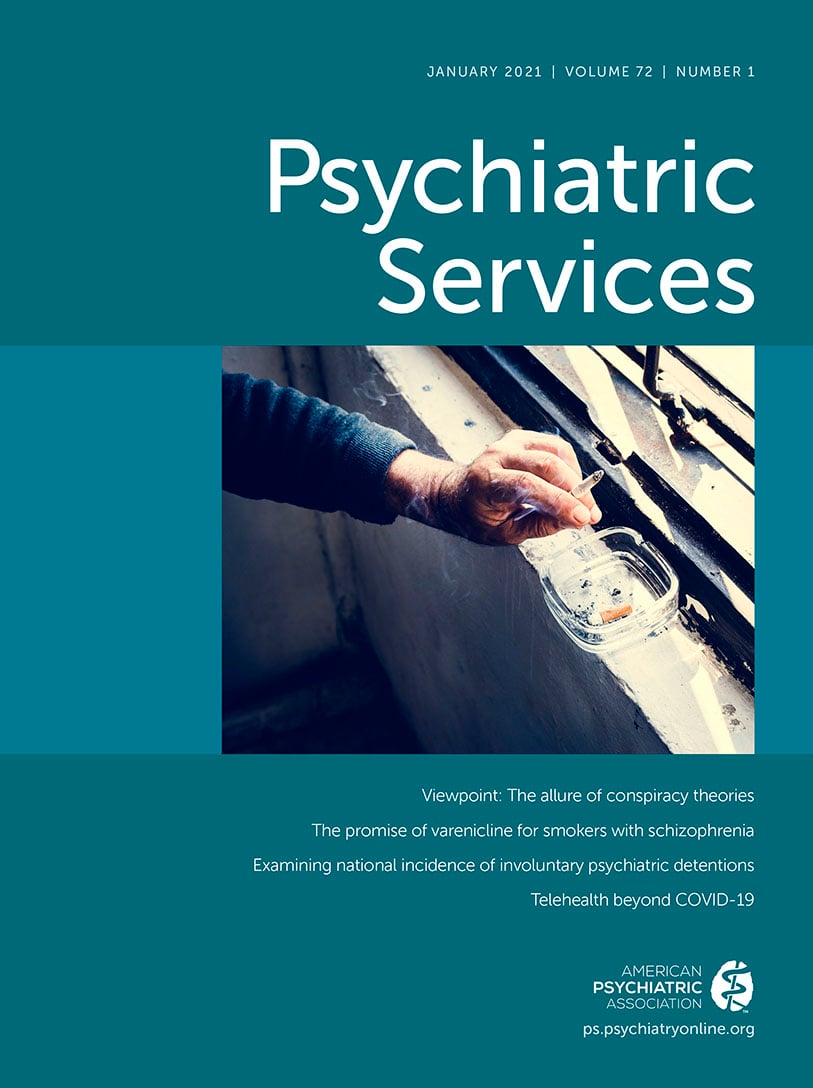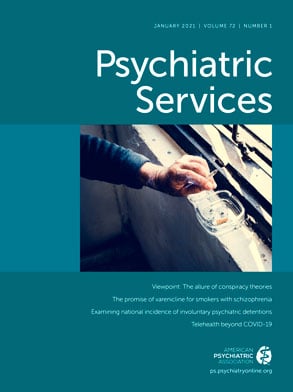Ferrara and Srihari argue in this issue of
Psychiatric Services (
1) that women are disadvantaged relative to men in early intervention services for first-episode psychosis in the United States. According to a recent report, 23 is the mean age of participants in such services (
2), probably because many early intervention programs set an age limit on entry. Most patients in these intervention services are men (
2). It has been acknowledged that in many countries, current early intervention programs are gender and age inequitable (
3). Relatively few women receive these services, and those who do constitute an underserved minority, both with respect to the number of individuals receiving services and to their stage in life at which they receive services. For men, first episodes of psychosis occur predominantly among young individuals, whereas they can occur among women at all ages (
4). Whatever the precise diagnosis, the emergence of psychosis is brought to clinical attention earlier for men than for women, perhaps because men are more likely to abuse substances that precipitate or unmask psychotic symptoms or because police involvement and involuntary hospitalization are more prevalent among men (
4).
As a result of the young age of first-episode service participants, current mental health care programming primarily addresses the challenges of the early twenties, namely independence from parents, completion of education, vocational training, expansion of social networks, substance abuse prevention, and development of intimate relationships. Even if there are no age limits to service entry, the needs of older individuals, both men and women, remain relatively neglected (
3). Individuals who develop psychotic illness at older ages face problems with employment, finances, housing, marriage, pregnancy and postpartum challenges, worsening health, parenting dilemmas, the burden of care for aging parents, and bereavement—themes that lend themselves to therapy but do not, at present, form a regular part of first-episode psychosis programming.
This lack of programming for older adults is understandable. The emphasis on early intervention originated in the hope that “catching” (and halting) a disease in the young when it first begins, or even before it begins, prevents what used to be called “degeneration.” An associated premise has been that young brains are more resilient, more responsive to treatment, and more resistant to damage than older brains. For this reason, the focus has been on early, intensive treatment to remove symptoms, encourage healthy lifestyles, and model effective modes of thinking and communicating—essentially helping young people deal with the biopsychosocial challenges they most frequently encounter.
Ferrara and Srihari (
1) are absolutely right that the needs of women in first-episode services are, as a consequence, often not addressed. This is probably not because of gender but, rather, because, as a group, the women needing treatment for first-episode psychosis are no longer very young. The authors correctly note that referral for cancer screening, for instance, is generally not integrated into first-episode programming. Because the population admitted to first-episode psychosis services is relatively youthful, a focus on general health promotion and prevention is usually lacking (except for smoking cessation and addiction). Ferrara and Srihari are also right that domestic abuse and reproductive and parenting issues, all of which are of central importance to women, are not a focus of such programs, because most young participants are unpartnered. The authors identify a lack of focus on victimization in first-episode services. Victimization
is, in fact, addressed because the risk for becoming a victim of violent crime is reportedly three times higher for men with psychosis than for their female peers (
3).
Ferrara and Srihari (
1) correctly point out that men and women differ in adverse effects of antipsychotic medication and that this difference is often not considered in pharmacotherapy guidelines. They neglect to mention, however, that sexually dimorphic dosing strategies are also important to consider, with special attention to reproductive transitions in women (
5), and that these strategies, too, are missing from current guidelines.
Importantly, what distinguishes women and men with psychosis is that women are much more frequently parents. These women may have children living at home, or they may be grieving for babies who have been aborted or adopted or are currently in foster care. The joys, responsibilities, and burdens of both child and elder care, which are all more prevalent among women than among men (
6), are unlikely to be a major focus of first-episode intervention programs that serve patients who are still in their early twenties.
Finally, the issue of mental illness stigma is a critical factor that differentiates men and women, perhaps especially in early adulthood. Young men whom the community perceives as suffering from psychosis are often feared and considered dangerous. Men with psychosis are more likely than their female counterparts to be distrusted and shunned by their community. Law enforcement is more often called when men behave unpredictably, and these men are more often subjected to police brutality. More frequently than women who show similarly agitated behavior, they are involuntarily admitted, placed in restraints, and maintained on long-acting injectable medication (
4). Men are more often homeless, friendless, isolated from family, and heavily addicted to street drugs. Women are stigmatized for other reasons, notably with respect to motherhood. Families and care providers often feel, justifiably or not, that women with a diagnosis of psychosis will not be good mothers and should not have children (
6). Another form of stigma, diagnostic overshadowing, that is, health providers’ attribution of all medical symptoms to psychosis, applies to men and women alike (
6).
In summary, Ferrara and Srihari (
1) rightly recommend that more attention be paid to gender in first-episode services. It is time to separately consider women and men who both have serious, but somewhat different, psychiatric needs throughout life.

